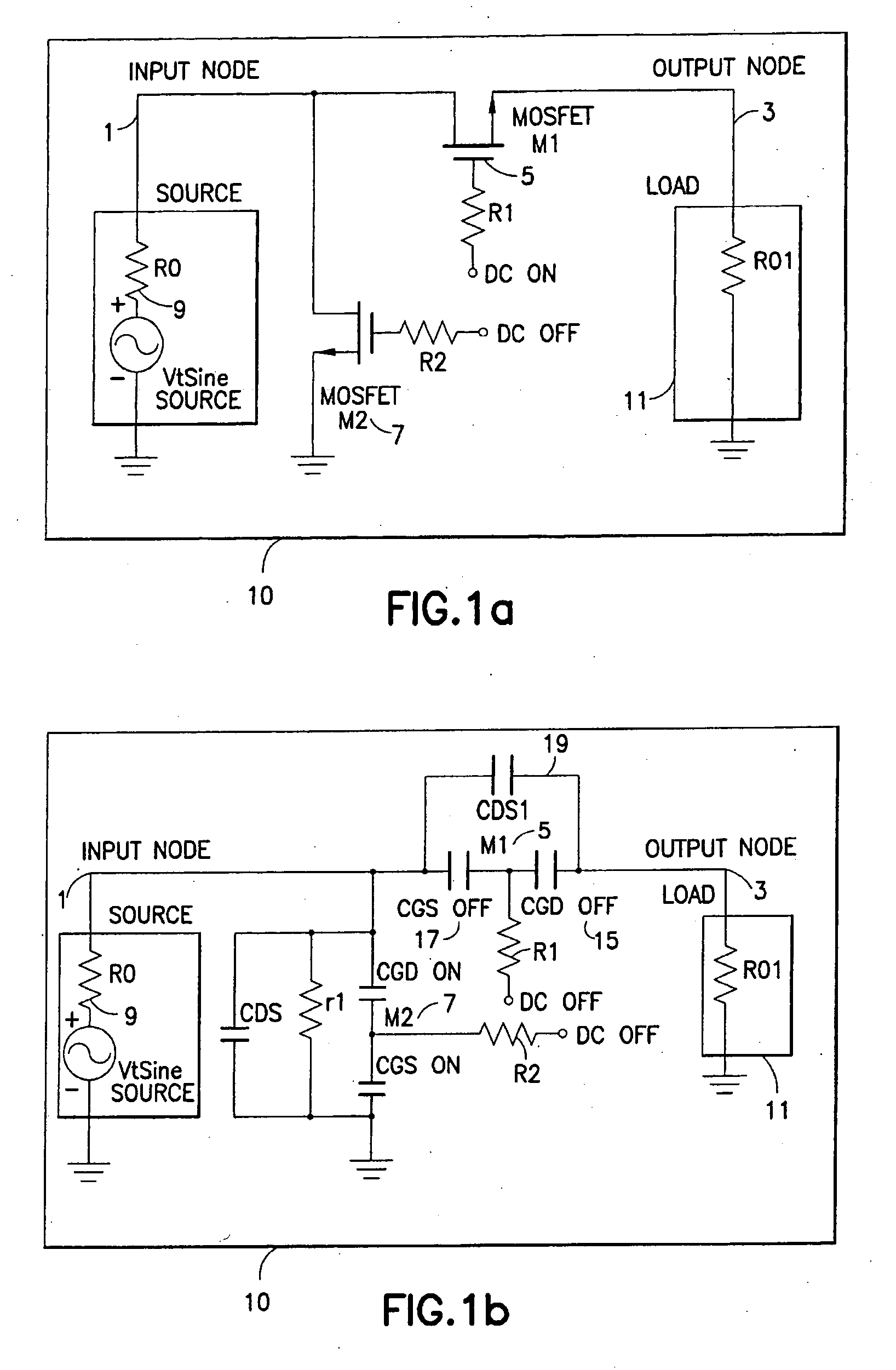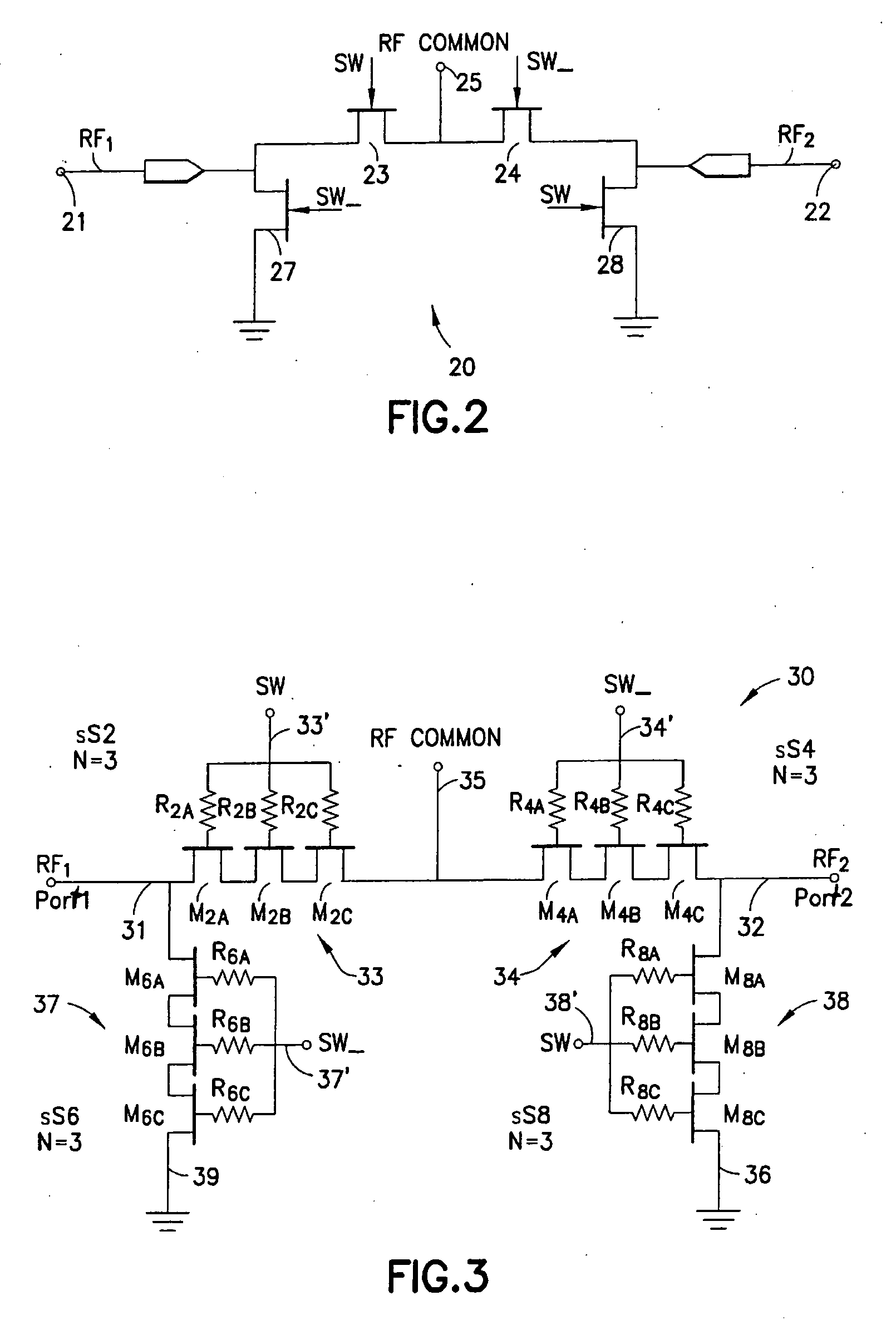Canceling harmonics in semiconductor RF switches
a technology of rf switch and harmonics, applied in the field of semiconductor rf switch cancelling harmonics, can solve the problems of bulk cmos rf switch disadvantageously exhibiting high insertion loss, improving rf switch performance with mixed, and varying degree of integrated circuit complexity and yield
- Summary
- Abstract
- Description
- Claims
- Application Information
AI Technical Summary
Benefits of technology
Problems solved by technology
Method used
Image
Examples
Embodiment Construction
[0037] Throughout this description, the preferred embodiment and examples shown should be considered as exemplars, rather than as limitations on the present invention.
[0038]FIG. 3 represents four semiconductor switching elements that function as an SPDT RF switch 30, similarly as the RF switching circuit described above with reference to FIG. 2. RF switch 30 includes input clamps to prevent signal feedthrough between an unselected input and the conducted signal. Switching elements 33, 34, 37 and 38 are each a FET “stack” that has three insulated gate FETs (such as MOSFETS) coupled in series. The gate of each of the FETs in a stack is coupled to a control voltage (SW or its inverse, SW_) via a gate resistance. If the gate RC product (gate resistance multiplied by the corresponding gate-channel capacitance) of each FET in a stack is substantially the same, and is long compared to the period of the signal being switched, then this arrangement will distribute the voltage applied to the...
PUM
 Login to View More
Login to View More Abstract
Description
Claims
Application Information
 Login to View More
Login to View More - R&D
- Intellectual Property
- Life Sciences
- Materials
- Tech Scout
- Unparalleled Data Quality
- Higher Quality Content
- 60% Fewer Hallucinations
Browse by: Latest US Patents, China's latest patents, Technical Efficacy Thesaurus, Application Domain, Technology Topic, Popular Technical Reports.
© 2025 PatSnap. All rights reserved.Legal|Privacy policy|Modern Slavery Act Transparency Statement|Sitemap|About US| Contact US: help@patsnap.com



